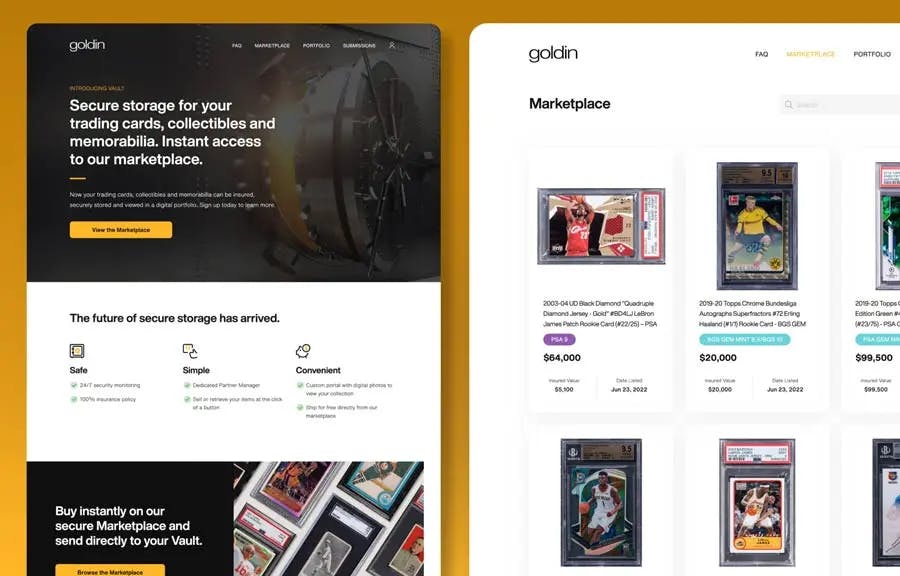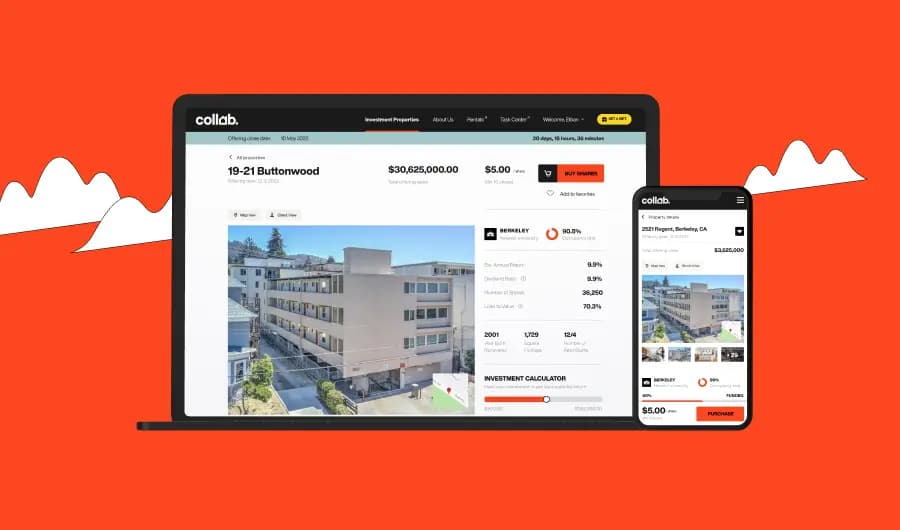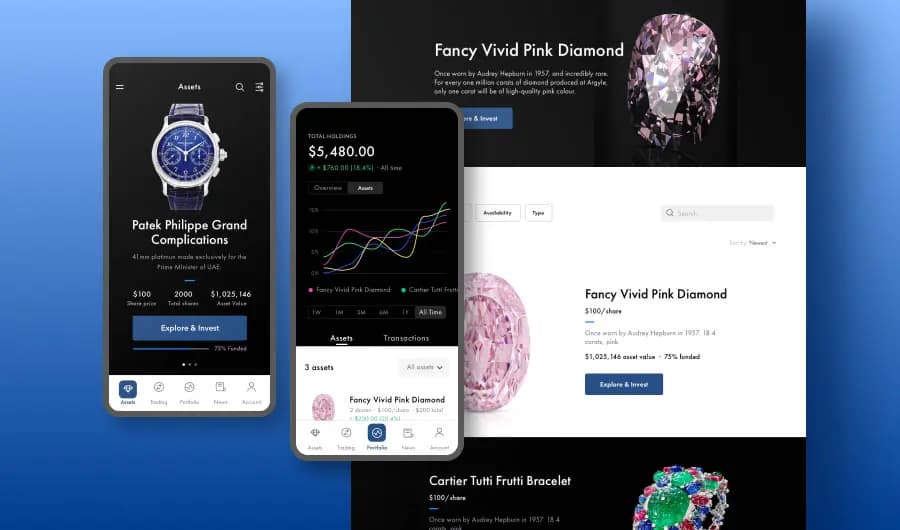
Fintech
Selecting The Right Crowdfunding Platform
Introduction
In today’s ever-changing economy, entrepreneurs are actively seeking unique methods of raising capital. Concurrently, millions of retail investors are eager to invest in alternative (non-traditional) assets, which have been historically inaccessible to them as an asset class.
One innovative solution has gained significant traction in solving both of these challenges: Equity Crowdfunding.
Through Equity Crowdfunding, firms can manage alternative assets, such as real estate, rare collectibles, sports memorabilia, fine art, and creative IP by utilizing crowdfunding platforms to offer their assets to a broader investor base, while simultaneously raising capital to fund (and expand) their portfolio of assets.
For those unfamiliar with the concept, refer to our previous article entitled “How Asset Holders are Raising Capital via Equity Crowdfunding” to learn more.
For those asset holders prepared to issue an offering, navigating the diverse landscape of Crowdfunding Platforms requires thorough research and careful consideration. This article aims to guide firms in selecting the right equity crowdfunding platform to maximize their chances of successful and scalable capital raising, while offering competitive comparisons to the different platform types available in the market today.
What is a Crowdfunding Platform?
A Crowdfunding Platform is a broad term that covers any technology that enables users to invest in a particular crowdfunding asset - typically through Regulations A, D, and CF. The main types of Crowdfunding Platforms are Marketplaces, White-Label Solutions, and Custom Applications. Each of them has their advantages and disadvantages, which is covered in more detail later.
Some common examples of Crowdfunding Platforms are:
- Particle (White-Label)
- Dalmore Fraction (White-Label)
- Start Engine (Marketplace)
- Republic (Marketplace)
- Fundrise (Custom)
- Rally (Custom)

Key Factors to Consider When Choosing
Many factors come into play when considering the right Crowdfunding Platform to handle your offering - reputation, regulatory compliance, investment minimums, investor base, technology, due diligence, customization, support services and even costs. Below are a few of the key areas to compare:
Platform Reputation and Track Record
Before proceeding with any equity Crowdfunding Platform, it is crucial to investigate the platform’s reputation and track record. Seek platforms with a proven history of successful issuer offerings and crowdfunding projects. Analyze their previous offerings to determine the overall success rate, the average returns for investors, and the quality of assets listed. Additionally, consider any media coverage, awards, or accolades the platform has received, as these can provide insights into their credibility.
Regulatory Compliance
Compliance with regulatory requirements is paramount in equity crowdfunding - especially when it comes to fulfilling legal requirements such as investor verification (KYC/AML). Confirm that the platform adheres to all legal obligations and has functionality that accounts for these SEC-required verifications. Engaging a platform that is compliant with crowdfunding regulations will help foster trust among potential investors, while protecting the issuing firm or asset holder from fraudulent investors.
Costs, Fees and Investment Minimums
Examine the fees charged by the platform. Evaluate whether the fees are reasonable and competitive within the industry. Avoid platforms that charge exorbitant fees, as these fees may impact the overall returns for both the firm and its investors. Simultaneously, carefully assess the investment minimums set by the Crowdfunding Platform. Lower minimums may attract a broader investor base, increasing the potential pool of investors.
Investor Base and Marketing Reach
A crucial aspect of selecting the right platform is understanding its investor base and marketing reach. The larger and more diverse the investor community, the better the chances of raising sufficient capital. Investigate the platform's marketing strategies, including online and offline channels, to gauge its ability to attract potential investors. A platform with an established investor network and a robust marketing strategy can significantly increase the visibility of the offering.
Technology and User Experience
User-friendly and reliable technology is a critical factor for both the issuing firm and potential investors. A well-designed platform with intuitive navigation and easy-to-understand investment processes can enhance investor confidence and overall participation. Test the platform's user experience from the perspective of an investor to identify any potential pain points or barriers that may discourage participation.
Customization, Scalability and Control
Not all Crowdfunding Platforms offer the same level of customization, content control, and brand positioning. Some may require that a firm’s single offering be issued within a popular marketplace (competing among many other offerings), while others may require the issuer to build a complex digital application from the ground-up in order to add more offerings into the portfolio in the future. Others - who may be seeking the best of both worlds - might consider a hybrid platform option that includes core white label functionality, yet also provides freedom to customize the content and positioning, while augmenting the product experience with new features, experience, or additional investment offerings over time.
Support and Communication
Prompt and effective communication with the Crowdfunding Platform is essential during the capital raising process. Evaluate the platform's customer support services, as well as its accessibility to answer queries and provide guidance. A responsive platform that values customer relations can significantly contribute to the success of the capital raising campaign.
First Steps in Selecting the Right Platform Option
Now that we have covered the key factors from a high level, let’s drill down into the necessary first steps to take in selecting the right platform option for your firm:
First question to ask yourself: What type of “Issuer” am I?
An "issuer" refers to the entity or individual that offers investment opportunities to investors. In short, the issuer is the owner, manager, or holder of the asset who is offering the opportunity for investors to invest in the asset, or as we will soon learn, a portfolio of assets. Issuers might be a real estate holding firm that owns and operates many properties, a collector of high value rare collectibles or memorabilia, an owner or fine art, or even a content creator or business owner.
There are two main types of issuers:
Single Asset Issuer - Managing and offering a single asset for investment
Single Asset Issuers are typically startup companies seeking funding to bring an idea/product/business to market. Common examples are businesses you see listed on marketplaces offering early equity or rewards for helping to fund a product/idea. Below is a more detailed breakdown of characteristics and important considerations:
- Typically a startup business seeking funding to bring an idea/product/business to market
- Only planning on listing one offering and not subsequent assets
- Single Asset Issuers seeking to raise capital from the public or investors may explore various fundraising avenues, including crowdfunding opportunities like Regulation CF, A+, or D offerings
- Because only one offering is needed, single issuers are typically better off going with an established marketplace with a built-in user base, low technological barriers, and percentage-of-offering pricing
- Early examples of single-offering crowdfunding marketplaces include Kickstarter or Indiegogo. More modern examples include Republic or StartEngine
- White-Label Platforms such as Particle are not typically the best fit for single-issuers given the temporary technology needs
Series Issuer - Managing and offering a portfolio of assets for investment
Series Issuers are companies planning on listing multiple assets, and need the ability to organize, manage, and support the sale of those assets. Below is a more detailed breakdown of characteristics and important considerations:
- A Series Issuer plans on listing multiple assets
- Series Issuers are significantly more complicated from a regulatory and technology perspective than Single Issuers
- Asset listings can range from businesses to collectables, bonds, athletes, and just about anything else that can be approved as an investment medium
- Series Issuers commonly manage their assets via a “Series LLC” approach, which is outlined well in this article
- Series Issuers are responsible for handling the legal approval, SEC/FINRA regulatory filings, asset management, back-office tracking, etc. associated with their assets
- Because of their increased responsibility, Series Issuers require more sophisticated and capable technology solutions in order to manage all the requirements
- White-Label Solutions or In-House Technology are the best options for Series Issuers. These options allow the Issuer total control over their assets, custom branding/marketing, and the tools necessary to meet requirements from Broker Dealers, Transfer Agents, and general regulatory bodies
Summary:
- Single Asset issuers only need to list and manage one asset, and are better off utilizing an established marketplace.
- Series Issuers need the ability to list multiple assets and should gravitate toward a white-label or in-house approach.

Reviewing the Crowdfunding Platform Landscape
When considering offering an asset for equity investing through crowdfunding, an asset holder should carefully compare the types of features, support, and costs of different Crowdfunding Platforms against the level of customization that each platform offers. This comparison is essential to ensure that the chosen platform aligns with the asset holder's specific needs, goals, and budget. Here are some best practices and a few insights to conduct a comprehensive comparison:
Assess customization and feature options:
- Evaluate the level of customization that each platform offers. Customization may include branding options, design flexibility for the fundraising campaign page, and the ability to tailor communication with investors
- Consider whether the platform allows the asset holder to set their own terms and conditions for the offering, such as the valuation of the asset, equity distribution, or fundraising timeline

Analyze platform services and customer support:
- Look into the range of services and support provided by each platform. Some crowdfunding platforms offer comprehensive services, including legal support, due diligence assistance, investor relations management, and marketing support, which can be valuable for asset holders seeking a smooth and successful fundraising process
- Consider the level of customer support provided by each platform. Responsive and helpful customer support can be invaluable during the fundraising process
- By conducting a thorough comparison of crowdfunding platforms based on costs and customization, asset holders can make an informed decision that optimizes their chances of successful equity fundraising while meeting their specific requirements
Identify key platform costs:
- Begin by listing all the costs associated with each Crowdfunding Platform. These costs may include platform fees, listing fees, transaction fees, investor verification fees, legal and compliance fees, and any additional charges specific to each platform.
- Pay close attention to whether the platform charges upfront fees or success-based fees, as these can significantly impact the asset holder's financial commitment
- Keep in mind that the cheapest option up-front may not always be the most suitable if it collects significant fees once the capital raise has been completed

Consider ongoing costs to maintain the platform:
- Research the amount of technologists required to maintain a software platform; including and providing ongoing updates that keep investors engaged, retained and monetizing.
- For those that consider an “In-House” option, the costs to facilitate fully-customized product development may cannibalize on the profits incurred from revenue obtained from the early cohorts of investors.
- Development and Ongoing Maintenance Costs
For those firms interested in having a scalable, customized option via “In-House”, we can compare the development and full-time staffing costs with the Particle solution, which offers a dedicated product team as a fractional allocation (instead of incurring the risk and cost of staffing multiple full-time roles) for the same amount as ONE full-time staff member (based in the U.S.)


Consider Investor Base and Reach:
- Assess the size and diversity of the investor base associated with each platform. A larger and more diverse investor community may increase the likelihood of attracting potential investors for the asset offering
- Investigate the platform's marketing reach and promotional efforts to gauge its ability to attract investors to the campaign
Review Success Stories and Testimonials:
- Research past success stories and testimonials from asset holders who have used each platform for equity crowdfunding. This can provide insights into the platform's track record and its ability to deliver on promises
Confirm Regulatory Compliance:
- Ensure that each platform complies with the necessary securities regulations and conduct proper investor verification on investors. This is crucial to protect the interests of both the asset holder and potential investors
Calculate the Overall Cost-Benefit Ratio:
- Weigh the costs of each platform against the level of customization, services, investor reach, and compliance to determine the overall cost-benefit ratio for each option.
Conclusion
Selecting the right equity Crowdfunding Platform is a crucial decision for firms and asset holders seeking to raise capital. Thoroughly researching and evaluating potential platforms based on reputation, technology, customization, fees, and support services will ensure that the chosen platform aligns with the firm's goals and maximizes the potential for successful capital raising.
A well-matched crowdfunding platform will not only help raise capital efficiently, but also strike the right balance in costs, scalability, and an engaging investor experience, while fostering lasting investor relationships that open doors to future opportunities for further growth and development.
Learn more insights about cost-effective white label crowdfunding solution by visiting the Particle Capital website.
If you have more questions or interest in meeting Scalio's Particle Investment Platform team, feel free to reach out for a friendly follow-up!

Joshua Lucas
COO | Managing Partner
Email: [email protected]
LinkedIn

Lawrence Valenti
CCO | Managing Partner
Email: [email protected]
LinkedIn

Micah Lucas
CTO | Managing Partner
Email: [email protected]
LinkedIn

Bradley Greenwood
CEO | Managing Partner
Email: [email protected]
LinkedIn









